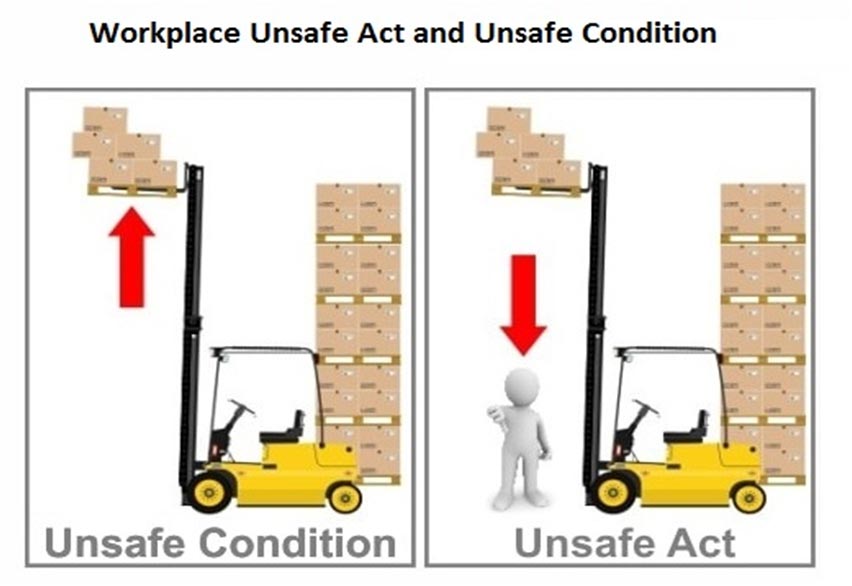As we go about our daily tasks, it’s important to remember that safety should always be our top priority. Accidents can happen due to unsafe acts or unsafe conditions, which can lead to injuries, property damage, and even loss of life. In this toolbox talk, we will discuss what constitutes an unsafe act and an unsafe condition, and provide examples to help you identify and avoid them.
What are Unsafe Acts and Unsafe Conditions?
Unsafe acts are any actions or behaviors that put ourselves or others at risk of harm. These could include using improper tools, failing to wear proper personal protective equipment (PPE), working without proper authorization, or simply being careless or distracted on the job.
Unsafe conditions are any factors in the workplace that increase the risk of accidents or injuries. These could include poor lighting, cluttered workspaces, slippery floors, or faulty equipment.

Examples of Unsafe Act and Unsafe Condition:
Examples of Unsafe Conditions
- Oxygen Deficiency
- Presence of toxic gases
- Presence of flammable gases
- Poor Housekeeping
- Presence of poisonous materials Slippery or damaged working floor
- Unguarded Machinery
- Improperly guarded machinery
- Loose electrical connections
- Unearthed electrical Appliances
- Poor Housekeeping
- Improper stacking of materials
- Defective measuring instruments
- damaged Tools
- Defective materials
- Inadequate illumination
Examples of Unsafe Acts
- Using Improper methods
- Using improper tools / equipment
- Failing to use proper PPE’s
- Operating without authority
- Over confidence
- Impulsiveness
- Laziness
- Showing off
- Horseplay Ill health
- Supervisory failure i.e: poor training, lack of discipline, poor housekeeping.
- Unsafe behavior
- Unsafe attitude
- Lack of knowledge
- Unsafe personal dress and accessories
Preventing Unsafe Acts and Unsafe Conditions
Preventing unsafe acts and unsafe conditions is everyone’s responsibility. Here are some tips to help you prevent accidents on the job:
- Always use proper tools and equipment for the task at hand
- Wear proper PPE as required by your job
- Follow established safety procedures and guidelines
- Keep your workspace clean and organized
- Report any unsafe conditions or hazards to your supervisor
- Never take shortcuts or risks when performing a task
- Take breaks as needed to stay alert and focused
Conclusion
Remember that safety is a team effort, and everyone has a role to play in preventing accidents and injuries on the job. By understanding what constitutes an unsafe act or an unsafe condition, and taking steps to prevent them, we can create a safer workplace for everyone.

Loving the info on this site, you have done outstanding job on the articles.
Hey! This is kind of off topic but I need some advice from an established
blog. Is it hard to set up your own blog? I’m not very
techincal but I can figure things out pretty fast. I’m thinking about setting up my own but I’m not sure where to begin. Do you have any
ideas or suggestions? Cheers
Here huge knowledgeable topic for EHS personnel
Greetings kindly send me a detailed Tool Box Talk suitable for presentation.
Cheers